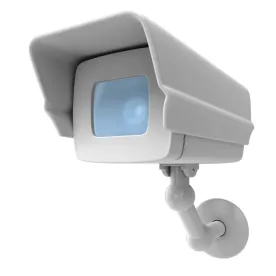Last week, a federal judge in the Eastern District of Washington suppressed evidence from a disguised webcam that had monitored the front yard of the defendant’s home for six weeks.
In United States v. Vargas, U.S. District Judge Edward F. Shea ruled that defendant Leonel Michel Vargas had a reasonable expectation of privacy in the activities occurring in and around the front yard of his rural home, and accordingly, that the warrantless, continuous and covert recording of this space violated the Fourth Amendment. In doing so, the court held that law enforcement may remotely and continuously view and record an individual’s front yard through the use of a hidden video camera located outside of the individual’s property only with a valid search warrant, which the officers in this case failed to procure in this case.
Here are the specifics: Local police installed a video camera that operated 24 hours-a-day on public utility pole 150 yards away from Vargas’s home. The camera was aimed at Vargas’s front yard and could rotate and zoom through remote control, thereby enabling the camera to focus on anything in the front yard, including the front door, items in an open parking structure, vehicles (and open trunks and doors), individuals, and surrounding areas. The video footage was saved to an external hard drive connected to a police computer. After about a month of observation, police used the camera to observe Vargas shooting a gun at beer bottles in what seemed to be target practice. Because police previously had determined that Vargas was an undocumented immigrant, they determined that they had probable cause to assert that he had violated federal law by being in possession of a firearm. The police used this information to obtain a search warrant to enter Vargas’s home, where they found four firearms and five grams of methamphetamine, which formed the basis for criminal charges. Vargas moved to suppress the evidence, arguing that it was all obtained through the initial unlawful search of his front yard by remote video camera.
In its response to Vargas’s contention, the government argued that police may lawfully record activities otherwise open to plain view. Specifically, the government argued that because Vargas’s backyard is not surrounded by a solid fence, and any activities around the residence could be seen plainly from the road where the camera was installed without invading the curtilage of the home, Vargas had no expectation of privacy and thus a warrant was not needed for this activity.
The court rejected this argument, explaining that the surveillance at issue here was not a “plain view” observation. Police had information about Vargas’s target practice only because of the view afforded by the video camera, which was covertly installed approximately 30 days before the target practice occurred. This view, according to the court, is so different in its intrusiveness that it does not qualify as a “plain view” observation.
Although both Vargas and the government had raised the question of whether Vargas’s front yard qualified as curtilage (where an individual has a reasonable expectation of privacy) or an “open field” (where one does not), the court stated that the case did not turn on that question. Rather, the court explained, the search was unreasonable because Vargas reasonably expected his private activities in his front yard would not be subject to six weeks of constant, covert surveillance—surveillance the court classified as a “severe governmental intrusion into Mr. Vargas’s privacy.”
The Electronic Frontier Foundation, which submitted an amicus brief by invitation of the court, noted that the invasiveness of video surveillance has led courts to require that police do more than just obtain a search warrant: law enforcement must make additional showings to the court, similar to those necessary to obtain authorization to wiretap a phone call. Both the EFF and the Court noted that the issues in this case implicate not just video cameras but other new technologies such as drones. The court explained that “[e]lectronic surveillance by the government is increasing, and the need to balance this government tool with the Fourth Amendment is required.”
The impact of electronic surveillance on privacy rights has received recent attention in the European Union as well. While the Vargas case addressed the question of whether it is lawful to place a camera on public property to monitor a private space, the European Court of Justice, as reported recently by InsidePrivacy, addressed the inverse question, of whether owners of home surveillance cameras located on private property could breach EU privacy laws by using those cameras to monitor public spaces.



 />i
/>i
